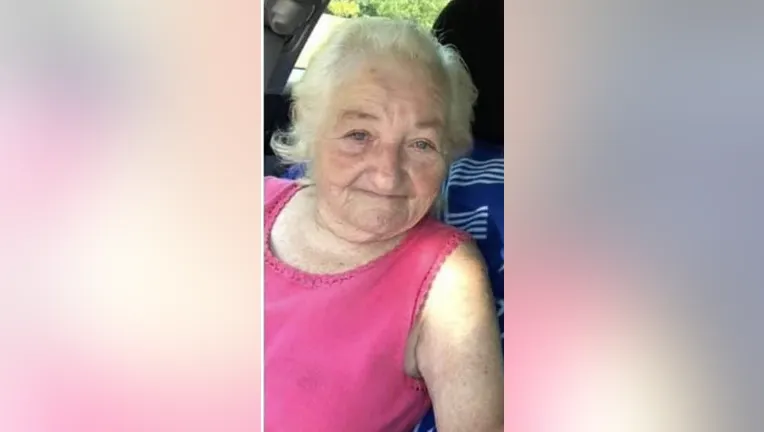Barbara McCray Disappeared in Polk County Georgia
Barbara “Granny” McCray was the heart of her family—an 83-year-old mother, grandmother, and neighbor whose life revolved around faith, food, and family gatherings in rural Polk County, Georgia. Small in stature but large in presence, she was known for her warmth, old-school work ethic, and the gentle routines that anchored her days. In the months before she vanished, Barbara was living with dementia, a condition her family managed through close supervision and well-worn habits that kept her world predictable: meals at familiar times, short walks near home, and constant check-ins.
Last seen on Dugdown Road
On the evening of Saturday, July 31, 2021, around 6:00 p.m., Barbara was last seen walking near her residence along Dugdown Road in Buchanan, a quiet area of northwest Georgia marked by narrow country lanes, woodlots, fences, and the kinds of pasture breaks and hedgerows that can quickly swallow a person from view. It was the height of a humid Georgia summer; twilight lingers, crickets take up their chorus, and sightlines are fickle—one bend of the road and a pedestrian can disappear from a driver’s vantage point in seconds. Family members noted her absence and, after initial checks yielded no sign of her, contacted authorities. A Mattie’s Call—Georgia’s alert system for missing elderly or cognitively impaired adults—was issued soon after.
The first 48 hours: rapid escalation
Those first two days were a study in controlled urgency. Local law enforcement established a command post and organized grid searches with the help of neighboring agencies. Volunteers from the community—church friends, neighbors, coworkers of relatives—formed shoulder-to-shoulder lines to push through high grass and light brush. K9 teams worked likely corridors that a disoriented walker might take: along fencelines, creek beds, and tree lines that subtly guide the feet. Deputies canvassed homes and porches. Drones and helicopters scanned from above, their thermal cameras probing for a heat signature in thickets and drawdowns. Ponds and farm impoundments were checked with poles and, in some cases, sonar. The rhythm settled into shifts: daylight sweeps, night searches limited by safety and visibility, then back at dawn.
Conflicting clothing descriptions and why that happens
Early reports contained two different accounts of Barbara’s last known clothing: one described a light-colored top, black skirt, and tennis shoes; another listed a pink shirt, gray shorts, and gray Nike shoes. This kind of discrepancy is common in the earliest hours of a missing-person case. Family members often search drawers and closets for what’s missing, neighbors recall quick glimpses, and witnesses remember color more readily than fabric type. Investigators typically preserve both versions until surveillance, photographs, or physical evidence can narrow it. In Barbara’s case, no conclusive photo or sighting emerged to reconcile the difference with certainty, so search teams were briefed to treat either description as plausible and focus on her physical profile and gait.
Terrain, hazards, and how dementia complicates searches
Buchanan’s fringe between homestead and woodland introduces several hazards for a person with dementia. Barbed-wire fences and property lines can deflect a wanderer into circular paths; shallow ravines and drainage ditches become hidden trip points when summer vegetation grows tall; heat and humidity accelerate dehydration, degrading judgment further with each hour. People with dementia often exhibit what search specialists call “goal confusion”—they appear purposeful but are not aiming for a stable destination. They may avoid open areas, seeking edges and shade where visibility drops. They sometimes zigzag around perceived obstacles rather than crossing them, creating looping tracks that can mislead trackers. All of these factors informed the search plan around Dugdown Road.
Community response and the character of rural aid
The response from Polk County and the surrounding region reflected the social fabric of a rural community. Churches organized water and food. Local businesses sent coolers and bug spray. Volunteers came with ATVs, horses, and drones of their own. Property owners granted access to pastures and barns; hunters shared informal maps of game trails and creek runs; old-timers pointed out the “cow gaps” and culverts where a small person could hide from the sun and be missed by a casual sweep. Even as official operations scaled their tactics, neighbors kept walking and re-walking the same corridors, convinced a new angle of light might reveal what a previous pass had missed.
Investigative posture as the days turned to weeks
As the ground search pushed beyond the most likely radius without locating Barbara, the posture shifted from pure search-and-rescue toward a broader missing-person investigation. Detectives revisited timelines: Who saw her, exactly when, and from what distance? What vehicles passed along Dugdown Road around that hour? Any recent service calls or suspicious-person reports nearby? They checked hospitals, clinics, shelters, and transportation hubs. With no immediate signs of foul play—no evident struggle, forced entry, or credible threat—investigators faced the difficult middle ground: treat the case as an at-risk missing adult while keeping space open for less likely scenarios.
The reward, appeals for tips, and sustained attention
As weeks passed, Barbara’s family and local officials renewed public appeals, emphasizing her size, age, and medical condition. A reward was publicized to encourage leads, and the case continued to circulate on regional television segments that spotlight long-term missing persons. Online communities that focus on missing adults cataloged her information and preserved flyers, photographs, and case summaries so that new eyes—amateur genealogists, hikers, anglers, and landowners doing seasonal clearing—could be primed to notice something out of place.
Why some cases remain unresolved despite “everything being done”
From the outside, it can be perplexing that a person disappears so close to home with so much attention and technology involved. Yet a combination of factors can keep a case unresolved: a short initial time window before anyone knows to look; dense vegetation and micro-terrain that hides small clues; weather that degrades scent and trace evidence; and the sheer number of “possible” paths radiating from a single sighting. In rural areas, private land access can also be a constraint—most owners are cooperative, but comprehensive coverage without missing a single patch of brush is hard to guarantee. When the subject is elderly and mobile, even a steady walking pace can extend the search radius dramatically in the first hour, creating a donut of uncertainty that grows faster than teams can sweep it.
Working hypotheses and how investigators weigh them
In the absence of definitive evidence, investigators typically keep multiple hypotheses alive:
- Unintentional wandering leading to concealment by terrain. The most statistically likely outcome with dementia, especially near woodlots, creek beds, and pasture edges.
- Medical emergency out of sight. A fall or sudden health event away from clear lines of travel.
- Accidental assistance. A well-meaning motorist or passerby giving a ride without realizing a Mattie’s Call had been issued.
- Foul play. Less supported early on, but not excluded until evidence allows it to be ruled out.
Each hypothesis drives different checks—re-searching specific terrain features, re-reviewing camera footage from nearby roads or stores, and re-interviewing anyone who might have seen an elderly woman walking that evening.
The family’s experience: grief without closure
For Barbara’s family, the passage of time redraws grief into a long horizon. There are birthdays and holidays where an empty chair becomes the loudest presence in the room. There is the constant second-guessing—was there a detail someone forgot to mention, a sighting someone misinterpreted? Families in this position become skilled archivists of their own pain, keeping logs of calls made, flyers posted, areas searched, and dates when the case appears in the news again. They also become teachers to the community, reminding others how to interact compassionately with people living with dementia and how to respond quickly when someone goes missing.
What keeps a case alive
Cases endure when there is faithful, periodic light. Local newsrooms revisiting the story on milestones; true-crime and missing-persons projects summarizing verified facts; and community members who keep an eye out during seasonal chores—all of these keep a missing person’s name present in the public imagination. For Barbara McCray, that sustained attention matters. It preserves the details that define her beyond the moment she was last seen: her stature, her laugh, the way she favored certain shoes, the cadence of her walk, the nicknames that made her “Granny” and “Mama” to the people who loved her most.
A careful summary of the known facts
- Name: Barbara “Granny” McCray
- Age at disappearance: 83
- Medical context: Living with dementia
- Date and time last seen: Saturday, July 31, 2021, around 6:00 p.m.
- Location: Near her residence along Dugdown Road, Buchanan, Polk County, Georgia
- Clothing: Reported as either a light-colored top with a black skirt and tennis shoes, or a pink shirt with gray shorts and gray shoes
- Initial response: Mattie’s Call issued; large, multi-agency search with ground teams, K9s, drones, helicopter/air support, and checks of ponds and structures
- Case status: Long-term missing; investigation remains open pending credible leads
Why telling Barbara’s story matters
When someone disappears, the community learns a kind of collective vigilance. Barbara’s story is both intimate and universal: intimate because it is the story of one family’s loss, universal because it teaches the stakes of looking out for elders living with cognitive decline. It encourages neighbors to save home surveillance for a few extra days when an alert goes out, to check outbuildings and hedgerows, and to report even small, uncertain sightings. Most importantly, it keeps Barbara present—as more than a case number, more than a flyer. As a person who is loved, missed, and still looked for.
Discover more from City Towner
Subscribe to get the latest posts sent to your email.




